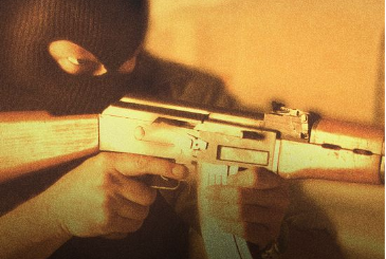Elevate Your Digital Presence
Explore tips and strategies to enhance your online engagement.
When Friendly Fire Goes Wrong: The Hidden Cost of Teamkills in CSGO
Discover the shocking truth about teamkills in CSGO! Explore the hidden costs of friendly fire and how it impacts your gameplay.
Understanding the Impact of Teamkills: A Deep Dive into CSGO Friendly Fire
In Counter-Strike: Global Offensive (CSGO), teamkills can have significant implications on the game's outcome and player dynamics. Teamkills occur when players accidentally or intentionally eliminate their teammates, resulting in a loss of resources, morale, and potential game-winning strategies. This phenomenon is particularly impactful in a team-based shooter, where collaboration and communication are crucial for victory. Understanding the causes and consequences of teamkills can help players become more mindful of their actions and contribute to a healthier gaming environment.
There are several factors that can lead to teamkills in CSGO, including friendly fire, poor communication, and player frustration. For instance, during intense engagements, miscommunication about enemy locations or tactics may result in a player mistakenly shooting their teammate. Additionally, emotional stress during high-stakes matches can lead to rash decisions and accidental teamkills. To mitigate this issue, players should cultivate better teamwork practices by using in-game communication tools effectively and maintaining a positive attitude. By recognizing the potential impact of teamkills, players can work towards reducing their occurrence and enhancing overall team performance.

Counter-Strike is a popular tactical first-person shooter game that pits teams against each other in a battle of strategy and skill. Players can choose from a variety of weapons, including the cz75 auto, to gain an advantage over their opponents. The game is known for its competitive scene and has a dedicated player base worldwide.
The Psychology Behind Friendly Fire: Why Do Players Teamkill?
The phenomenon of teamkilling in multiplayer gaming often raises eyebrows, but a closer look reveals a complex interplay of psychological factors. Players, immersed in competitive environments, may experience heightened emotions and stress, leading to impulsive decisions. According to the theory of displaced aggression, when players feel frustrated by their inability to perform well, they may redirect their anger at their teammates rather than at the game itself. This behavior is not always premeditated; sometimes, it's a manifestation of frustration that bubbles over in the heat of battle.
Additionally, the social dynamics of online gaming communities play a crucial role in teamkill behaviors. Players often seek to assert dominance or establish hierarchy, and for some, teamkilling can be perceived as a way to demonstrate power or control. This tendency can also stem from a desire for attention within the gaming community, with players intentionally disrupting their team to provoke reactions. Understanding these psychological underpinnings highlights the need for better communication and collaboration strategies in gaming, as addressing the root causes of teamkilling can lead to a more positive gaming experience for everyone.
How Teamkills Affect Game Strategy and Team Morale in CSGO
In competitive Counter-Strike: Global Offensive (CSGO), teamkills can significantly disrupt game strategy and outcomes. A teamkill not only results in the loss of a teammate but also places the surviving players at a tactical disadvantage. When a player accidentally eliminates their ally, it creates a gap in team coordination and often leads to confusion. Teams that rely on precise positioning and synergy may struggle to recover from such incidents, resulting in poor communication and misstrategized plays as players become overly cautious of their teammates' actions. This can lead to missed opportunities during important engagements, ultimately affecting the team's chances of victory.
Moreover, the psychological impact of teamkills can be profound on team morale. When a player is repeatedly involved in teamkills, it can breed frustration and resentment among teammates, which in turn hampers collaboration and trust. Teams may experience a breakdown in confidence, leading to reduced gameplay performance. This phenomenon is often exacerbated in high-stakes matches, where every frag counts. To mitigate the negative effects, teams should foster open communication and promote a positive environment, encouraging players to focus on strategy rather than blame. By addressing the impact of teamkills on morale, teams can enhance their resilience and adapt their strategies for better outcomes.